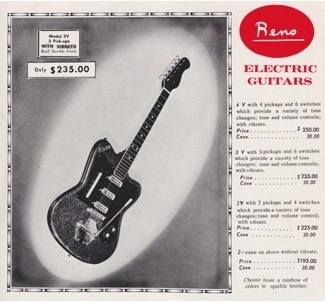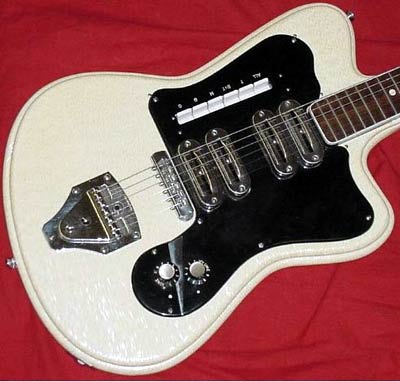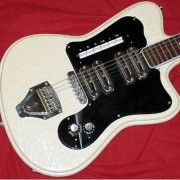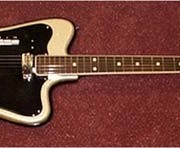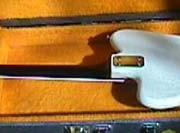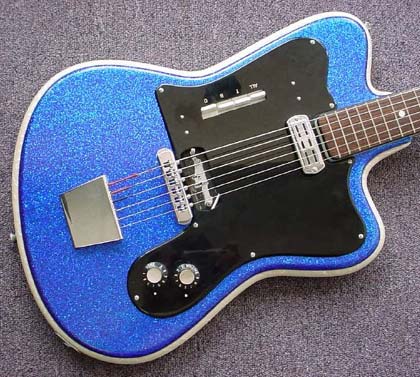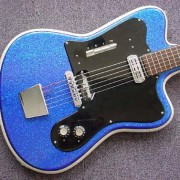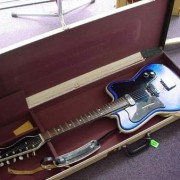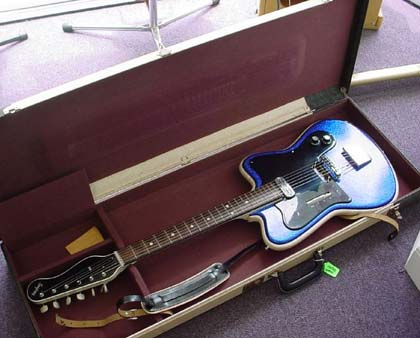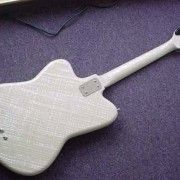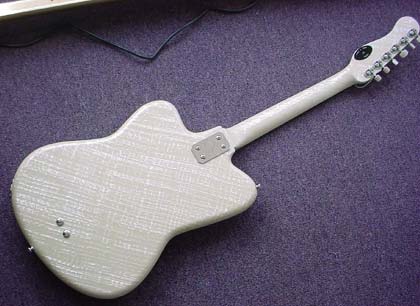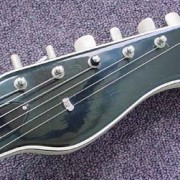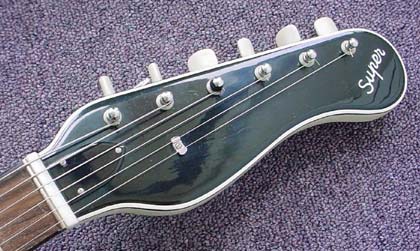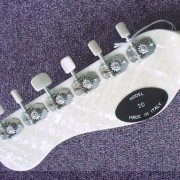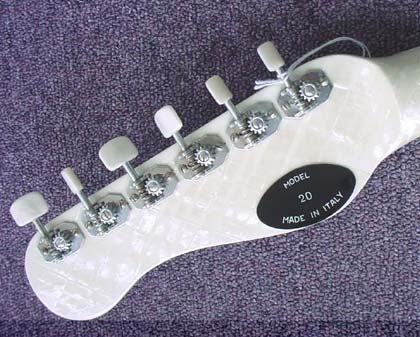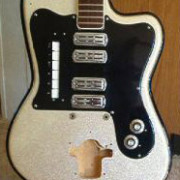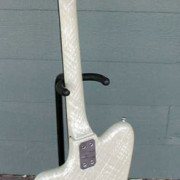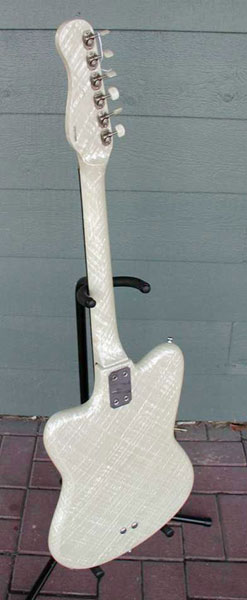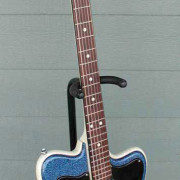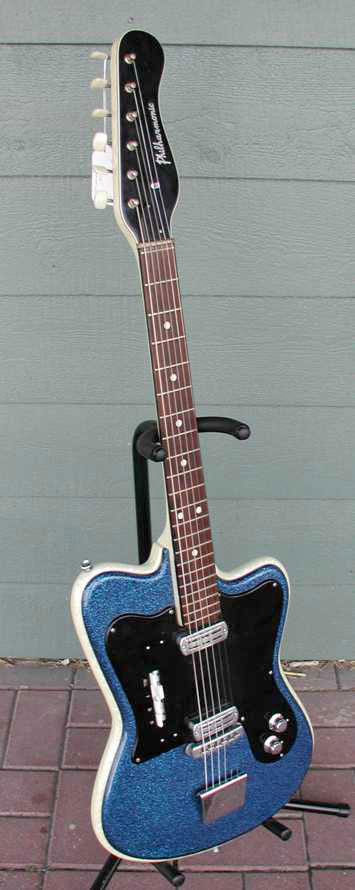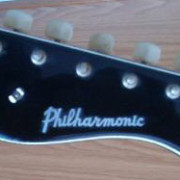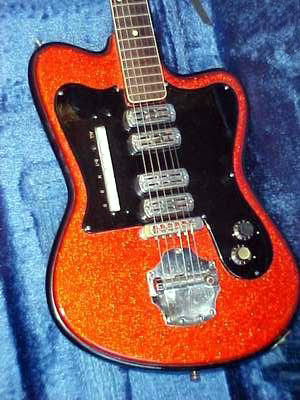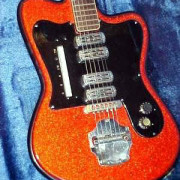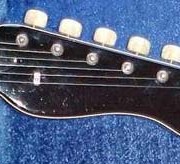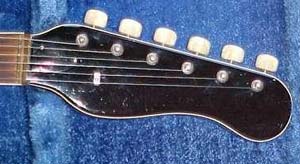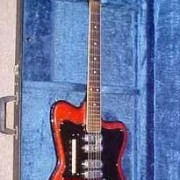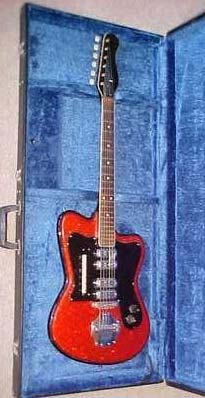Crucianelli solid bodies: late 1963
by Jack Marchal
1963 Reno 30-V red
One more Reno, with an additional pickup and a vibrato (without bar).
Aside from that, the critical specs for dating the instrument are exactly the same as for the previous Reno: new pickups, old peghead, still no zero-fret. This is a very unusual combination of transitional features, also seen on one of the Supremo shown next page.
As Supremo, Reno was probably a logo choosed by some “one-shot” distributor willing to take advantage of the sparkle celluloid craze that was peaking about mid to late 1963. This popularity declined severely in 1964. All sparkle finishes were discontinued by the end of 1965.
- Redesigned pickguard with the upper part parallel to body edge.
- New Crucianelli specific tremolo.
- Common.
Parte superiore del battipenna ridisegnata per seguire il profilo del corpo.
Appare un nuovo vibrato specifico di Crucianelli. Comune


